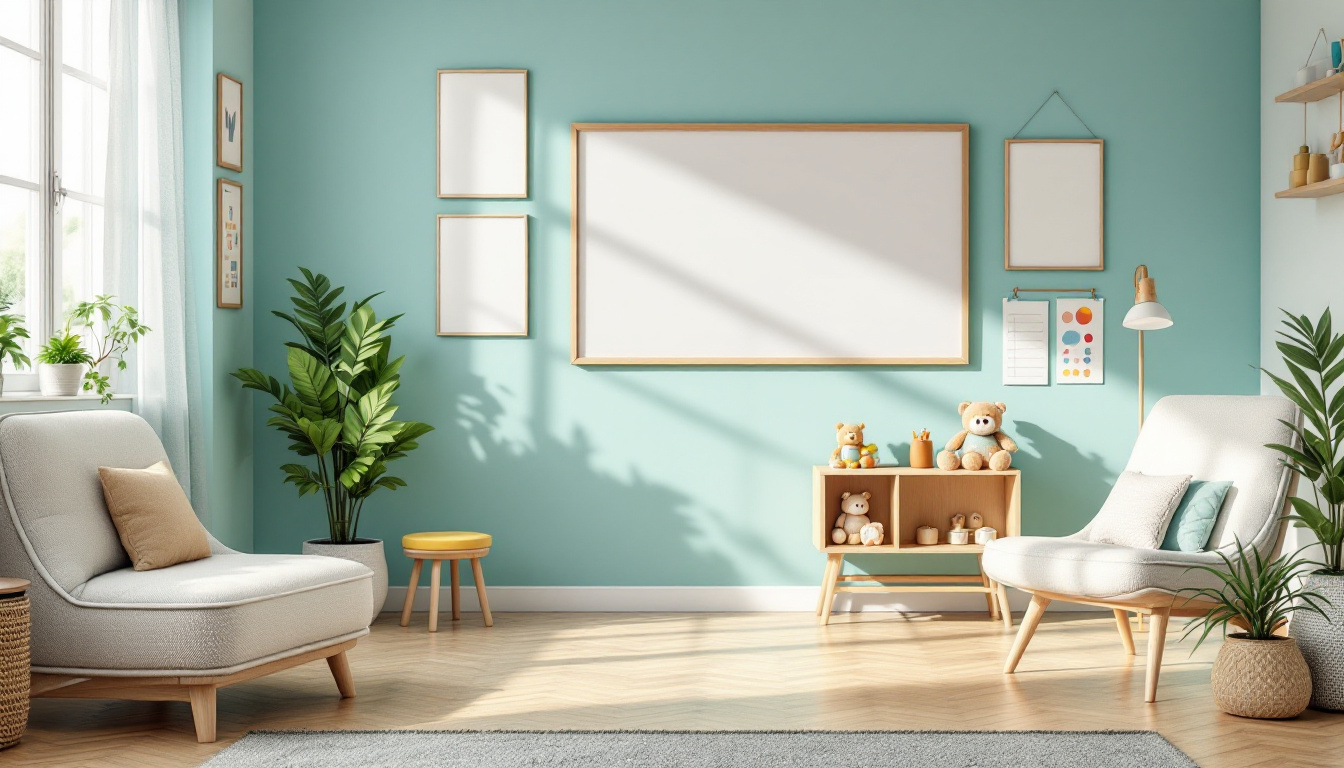Top 3 Benefits of Sensory Table for Autism
.jpg)

Understanding Sensory Tables
Sensory tables are valuable tools for promoting sensory play and exploration, particularly for individuals with autism. By providing a controlled and stimulating environment, sensory tables offer a wide range of sensory experiences that can benefit individuals with autism in various ways.
What is a Sensory Table?
A sensory table, also known as a sensory bin or sensory tray, is a specially designed table or container filled with materials that engage the senses. These materials can include items like water, sand, rice, beans, or other tactile and visually stimulating substances. The table is typically equipped with various tools and objects that encourage hands-on exploration, such as scoops, cups, and brushes.
The sensory table serves as a dedicated space for individuals with autism to engage in sensory play and learn through their senses. It provides a safe and structured environment where they can freely explore different textures, colors, and sensory stimuli. By manipulating and interacting with the materials in the sensory table, individuals with autism can enhance their sensory processing skills and develop a better understanding of their sensory preferences.
Importance of Sensory Play for Autism
Sensory play is crucial for individuals with autism as it helps them develop and refine their sensory processing abilities. Many individuals with autism have sensory processing differences, meaning they may be hypersensitive or hyposensitive to certain sensory stimuli. Sensory play provides them with opportunities to regulate their sensory responses and learn how to adapt to different sensory experiences.
Engaging in sensory play through a sensory table offers numerous benefits for individuals with autism:
Sensory Stimulation
Sensory tables provide a rich sensory experience by engaging multiple senses simultaneously. The tactile sensations, visual stimulation, and auditory feedback encountered during sensory play can help individuals with autism explore and process sensory information in a controlled and enjoyable manner. This sensory stimulation supports their sensory integration skills and can contribute to improved sensory processing abilities over time.
Cognitive Development
Sensory play facilitated by sensory tables also promotes cognitive development. Through hands-on exploration, individuals with autism can enhance their problem-solving skills, creativity, and imagination. They learn to make connections, experiment with cause and effect relationships, and develop a deeper understanding of the world around them.
Emotional Regulation
Sensory play in a sensory table can assist individuals with autism in regulating their emotions. Engaging in sensory activities can be calming and soothing, helping to reduce anxiety and stress. The sensory experiences provided by the table can serve as a positive outlet for self-expression, allowing individuals with autism to manage their emotions and develop coping strategies.
Understanding the concept of sensory tables and recognizing the importance of sensory play for individuals with autism is the foundation for unlocking their potential for growth and development. By creating a supportive and engaging sensory environment, sensory tables can serve as powerful tools in promoting sensory exploration and enhancing the overall well-being of individuals with autism.
Benefits of Sensory Tables for Autism

Sensory tables offer significant benefits for individuals with autism. These tables provide a controlled and engaging environment that encourages sensory exploration and play. By incorporating sensory tables into therapy or daily routines, individuals with autism can experience various advantages in terms of sensory stimulation, cognitive development, and emotional regulation.
Sensory Stimulation
Sensory tables provide a platform for individuals with autism to engage in sensory stimulation. The different materials and textures used in sensory table activities stimulate the senses, such as touch, sight, and sound. These sensory experiences can help individuals with autism develop their sensory processing skills, enhance sensory integration, and improve overall sensory awareness.
Through sensory stimulation, individuals with autism can learn to process and respond to sensory information more effectively. This can lead to improvements in sensory modulation, attention, and focus. Sensory tables allow for hands-on exploration, enabling individuals to engage with different textures, temperatures, and objects in a controlled and safe environment.
Cognitive Development
Sensory tables also offer opportunities for cognitive development in individuals with autism. The interactive nature of sensory table activities helps to promote problem-solving skills, creativity, and imagination. By manipulating materials, sorting objects, and engaging in sensory play, individuals with autism can enhance their cognitive abilities.
Tabletop activities involving pouring, scooping, and sorting can improve fine motor skills, hand-eye coordination, and dexterity. These activities also encourage individuals to practice their communication and social interaction skills as they engage with others during sensory play.
Emotional Regulation
Emotional regulation is another important benefit of sensory tables for individuals with autism. The sensory experiences provided by the table can help individuals self-regulate and manage their emotions. Engaging in sensory play can serve as a calming and soothing activity, allowing individuals to reduce anxiety, stress, and sensory overload.
Sensory tables create a safe and predictable space where individuals with autism can explore and process their emotions. The sensory stimulation provided by the table promotes relaxation, sensory grounding, and a sense of comfort. This can contribute to increased emotional well-being and improved self-regulation skills.
By incorporating sensory tables into therapy sessions or daily routines, individuals with autism can reap the benefits of sensory stimulation, cognitive development, and emotional regulation. These tables provide a valuable tool for promoting sensory exploration, enhancing learning experiences, and supporting overall development in individuals with autism.
Setting Up a Sensory Table

To fully unleash the potential of a sensory table for individuals with autism, it is important to set it up properly. This involves choosing the right materials and designing a sensory-friendly space that promotes engagement and exploration.
Choosing the Right Materials
When selecting materials for a sensory table, it is essential to consider the specific sensory needs and preferences of individuals with autism. Here are some key factors to keep in mind:
- Textures: Choose a variety of textures to provide a rich sensory experience. Consider materials such as sand, water beads, rice, or kinetic sand. These textures can be soothing, provide tactile stimulation, and promote sensory exploration.
- Visual Stimulation: Incorporate visually appealing materials to engage the visual senses. This can include items like colorful fabrics, transparent containers, or objects with different shapes and patterns.
- Auditory Elements: Include materials that produce different sounds or allow for auditory exploration. For example, you can add musical instruments, shakers, or textured objects that make interesting sounds when touched.
- Scents: Consider adding scented materials, such as scented playdough or essential oils, to provide olfactory stimulation. Pleasant scents can help create a calming and engaging sensory experience.
- Safety: Ensure that all materials used in the sensory table are safe and non-toxic. Avoid small objects that could pose a choking hazard. Regularly inspect and clean the materials to maintain a safe and hygienic environment.
Designing a Sensory-Friendly Space
Creating a sensory-friendly space is essential for individuals with autism to feel comfortable and engaged in sensory play. Here are some tips for designing a sensory-friendly area:
- Organization: Keep the sensory table area organized and clutter-free to reduce sensory overload. Use storage bins or shelves to neatly store materials when not in use.
- Lighting: Consider the lighting in the space. Natural light is ideal, but if that is not possible, opt for soft, diffused lighting to create a calming atmosphere. Harsh or flickering lights can be overwhelming for individuals with autism.
- Noise Level: Minimize unnecessary background noise to create a quiet and peaceful environment. If possible, designate a separate area for the sensory table to reduce distractions.
- Comfort: Provide comfortable seating options, such as cushions or bean bags, to support individuals during sensory exploration. Consider the height of the table and seating to ensure accessibility for all.
- Visual Structure: Use visual cues, such as visual schedules or labels, to provide structure and predictability. Visual supports can help individuals with autism understand expectations and navigate the sensory table activities more independently.
By carefully selecting the materials and designing a sensory-friendly space, individuals with autism can fully benefit from the sensory table experience. The right materials and environment can enhance sensory stimulation, promote engagement, and support overall sensory development.
Sensory Table Activities for Autism
Sensory tables provide a dynamic and engaging way for individuals with autism to explore and interact with their environment. Here are two key types of sensory table activities that can be beneficial for autistic individuals:
Textures and Tactile Exploration
One of the primary purposes of a sensory table is to provide opportunities for tactile exploration. By incorporating various textures, individuals with autism can engage their senses and develop important sensory processing skills. Here are some examples of textures and tactile materials that can be used in sensory table activities:
These textures can be combined, separated, or used individually to create a variety of sensory experiences. For example, hiding small objects in a container filled with sand can encourage individuals to dig and explore. Tactile activities like molding playdough or pouring water from one container to another can also promote fine motor skills and hand-eye coordination.
Sensory Integration Activities
Sensory integration activities in sensory tables can help individuals with autism develop and refine their sensory processing abilities. These activities involve stimulating multiple senses simultaneously and encouraging the integration of sensory information. Here are some examples of sensory integration activities for a sensory table:
These sensory integration activities can enhance sensory processing skills, promote focus and attention, and foster cognitive development. By engaging multiple senses, individuals with autism can learn to process sensory information more efficiently and adapt to different sensory environments.
When planning sensory table activities for individuals with autism, it's important to consider their specific sensory preferences and sensitivities. Provide a supportive and structured environment, offer choices, and adjust the activities based on individual needs. By incorporating these sensory table activities, you can create a rich and engaging sensory experience that promotes learning, exploration, and sensory development for individuals with autism.
Tips for Using Sensory Tables with Autistic Individuals
When utilizing sensory tables with autistic individuals, it is essential to create a structured routine and provide supportive guidance. These strategies can help optimize the sensory experience and promote positive engagement.
Creating a Structured Routine
Establishing a structured routine is crucial when incorporating sensory tables into the daily activities of autistic individuals. A predictable schedule helps provide a sense of security and allows individuals to anticipate sensory playtime. Consider the following tips for creating a structured routine:
- Consistency: Implement a consistent schedule for sensory table activities, whether it's a daily or weekly routine. Consistency helps promote familiarity and reduces anxiety.
- Visual Schedule: Use visual schedules or visual cues to provide a visual representation of the routine. Visual schedules can include pictures, symbols, or written words to help individuals understand and follow the sequence of activities.
- Transition Strategies: Prepare individuals for transitions between activities by offering visual or verbal cues. This helps them mentally prepare for the change and minimizes potential anxiety or resistance.
- Clear Instructions: Clearly communicate expectations and instructions for using the sensory table. Use simple and concise language, visual supports, or social stories to enhance understanding.
Providing Supportive Guidance
Supportive guidance plays a vital role in facilitating the use of sensory tables for autistic individuals. By offering appropriate support, you can enhance their sensory experience and promote engagement. Consider the following tips for providing supportive guidance:
- Individualized Approach: Recognize that each individual may have different sensory preferences and sensitivities. Tailor the sensory activities to their specific needs, considering their sensory profiles and preferences.
- Gradual Introduction: Introduce new sensory materials or activities gradually, allowing individuals time to become familiar with and adjust to the new sensations. This gradual approach helps prevent sensory overload or overwhelm.
- Observe and Respond: Observe the individual's reactions and response to sensory stimuli. Pay attention to signs of discomfort, overstimulation, or sensory seeking behavior. Adjust or modify the sensory experiences accordingly to ensure a positive and comfortable experience.
- Facilitate Communication: Encourage individuals to express their sensory preferences and sensations during the sensory play. Provide opportunities for communication, whether through verbal language, alternative communication methods, or non-verbal cues. This helps individuals develop self-awareness and self-advocacy skills.
By implementing a structured routine and providing supportive guidance, you can optimize the use of sensory tables for autistic individuals. These strategies promote predictability, understanding, and comfort, allowing for a more enriching and positive sensory experience.
Expanding Sensory Play Beyond the Table
While sensory tables provide a dedicated space for sensory exploration, it's important to expand sensory play beyond the table to maximize the benefits for individuals with autism. By incorporating sensory elements into daily activities and encouraging exploration in various environments, we can create more opportunities for sensory stimulation and learning.
Incorporating Sensory Elements in Daily Activities
Integrating sensory elements into daily activities allows individuals with autism to engage with their senses in different contexts. Here are some examples of how sensory elements can be incorporated:
By infusing sensory elements into daily activities, individuals with autism can have a more holistic sensory experience and enhance their overall sensory development.
Encouraging Sensory Exploration in Various Environments
While the sensory table is a valuable tool, it's essential to encourage sensory exploration in different environments to promote generalization of skills. Here are some suggestions for creating sensory-rich environments:
By encouraging sensory exploration in various environments, individuals with autism can generalize their sensory skills and adapt to different sensory stimuli encountered in daily life.
Expanding sensory play beyond the table allows individuals with autism to engage their senses in a wider range of contexts and environments. By incorporating sensory elements into daily activities and encouraging exploration in various settings, we can support their sensory development, promote generalization of skills, and create a more inclusive and enriched sensory experience.
Sources
https://www.crossrivertherapy.com/autism/sensory-table-for-autism
https://www.ambitionsaba.com/sensory-table-for-autism
https://specialneedsparenting.net/sand-and-water-sensory-tables-special-needs
More Resources
Expert Clinicians
Get started today ->


.jpg)

.png)
.jpg)
.jpg)



















































































































































































































































































































































































































































.jpg)
.jpg)
.jpg)
.jpg)
.jpg)
.jpg)
.jpg)
.jpg)
.jpg)
.jpg)
.jpg)
.jpg)
.jpg)
.jpg)
.jpg)
.jpg)
.jpg)
.jpg)
.jpg)
.jpg)
.jpg)
.jpg)
.jpg)
.jpg)

.jpg)
.jpg)
.jpg)
.jpg)
.jpg)
.jpg)
.jpg)
.jpg)
.jpg)
.jpg)
.jpg)
.jpg)
.jpg)
.jpg)
.jpg)
.jpg)
.jpg)
.jpg)
.jpg)
.jpg)
.jpg)
.jpg)
.jpg)
.jpg)





































































































































































































.jpg)



































































.jpg)
.jpg)
.jpg)
.jpg)
.jpg)
.jpg)
.jpg)
.jpg)
.jpg)
.jpg)
.jpg)
.jpg)
.jpg)
.jpg)
.jpg)
.jpg)
.jpg)
.jpg)
.jpg)
.jpg)
.jpg)
.jpg)
.jpg)
.jpg)
.jpg)
.jpg)
.jpg)
.jpg)
.jpg)
.jpg)
.jpg)
.jpg)
.jpg)
.jpg)


.jpg)
.jpg)
.jpg)
.jpg)
.jpg)
.jpg)
.jpg)
.jpg)
.jpg)
.jpg)
.jpg)
.jpg)
.jpg)
.jpg)
.jpg)
.jpg)
.jpg)
.jpg)
.jpg)
.jpg)
.jpg)
.jpg)
.jpg)
.jpg)
.jpg)
.jpg)
.jpg)


.jpg)
.jpg)
.jpg)
.jpg)
.jpg)
.jpg)
.jpg)
.jpg)
.jpg)
.jpg)
.jpg)
.jpg)
.jpg)
.jpg)
.jpg)
.jpg)
.jpg)
.jpg)
.jpg)

.jpg)

.jpg)



































































































.jpg)
.jpg)
.jpg)
.jpg)
.jpg)
.jpg)
.jpg)
.jpg)
.jpg)
.jpg)
.jpg)
.jpg)
.jpg)
.jpg)
.jpg)
.jpg)
.jpg)
.jpg)
.jpg)
.jpg)
.jpg)
.jpg)
.jpg)
.jpg)
.jpg)
.jpg)
.jpg)
.jpg)
.jpg)
.jpg)
.jpg)
.jpg)
.jpg)
.jpg)
.jpg)
.jpg)
.jpg)
.jpg)
.jpg)
.jpg)
.jpg)
.jpg)
.jpg)
.jpg)
.jpg)
.jpg)
.jpg)

.jpg)
.jpg)
.jpg)
.jpg)
.jpg)
.jpg)
.jpg)
.jpg)
.jpg)
.jpg)
.jpg)
.jpg)
.jpg)
.jpg)

.jpg)
.jpg)
.jpg)
.jpg)
.jpg)
.jpg)
.jpg)
.jpg)
.jpg)
.jpg)
.jpg)
.jpg)
.jpg)
.jpg)

.jpg)
.jpg)
.jpg)
.jpg)
.jpg)
.jpg)
.jpg)
.jpg)
.jpg)
.jpg)
.jpg)
.jpg)
.jpg)
.jpg)

.jpg)
.jpg)
.jpg)
.jpg)
.jpg)
.jpg)
.jpg)
.jpg)
.jpg)
.jpg)
.jpg)
.jpg)
.jpg)
.jpg)

.jpg)
.jpg)
.jpg)
.jpg)
.jpg)
.jpg)
.jpg)
.jpg)
.jpg)
.jpg)
.jpg)
.jpg)
.jpg)
.jpg)

.jpg)
.jpg)
.jpg)
.jpg)
.jpg)
.jpg)
.jpg)
.jpg)
.jpg)
.jpg)
.jpg)
.jpg)
.jpg)
.jpg)
.jpg)
.jpg)
.jpg)
.jpg)
.jpg)
.jpg)
.jpg)
.jpg)
.jpg)
.jpg)
.jpg)
.jpg)
.jpg)
.jpg)
.jpg)
.jpg)
.jpg)
.jpg)
.jpg)
.jpg)
.jpg)
.jpg)
.jpg)
.jpg)
.jpg)
.jpg)
.jpg)
.jpg)
.jpg)
.jpg)
.jpg)
.jpg)
.jpg)
.jpg)

.jpg)
.jpg)
.jpg)
.jpg)
.jpg)
.jpg)
.jpg)
.jpg)
.jpg)
.jpg)
.jpg)
.jpg)
.jpg)
.jpg)
.jpg)
.jpg)
.jpg)
.jpg)
.jpg)
.jpg)
.jpg)
.jpg)
.jpg)
.jpg)
.jpg)

.jpg)
.jpg)
.jpg)
.jpg)
.jpg)
.jpg)
.jpg)
.jpg)
.jpg)
.jpg)
.jpg)
.jpg)
.jpg)
.jpg)
.jpg)
.jpg)
.jpg)
.jpg)
.jpg)
.jpg)
.jpg)
.jpg)
.jpg)

.jpg)
.jpg)
.jpg)
.jpg)
.jpg)
.jpg)
.jpg)
.jpg)
.jpg)
.jpg)
.jpg)
.jpg)
.jpg)
.jpg)
.jpg)
.jpg)
.jpg)
.jpg)
.jpg)
.jpg)
.jpg)
.jpg)
.jpg)

.jpg)
.jpg)
.jpg)
.jpg)
.jpg)
.jpg)
.jpg)
.jpg)
.jpg)
.jpg)
.jpg)
.jpg)
.jpg)
.jpg)
.jpg)
.jpg)
.jpg)
.jpg)
.jpg)
.jpg)
.jpg)
.jpg)
.jpg)
.jpg)
.jpg)
.jpg)
.jpg)
.jpg)
.jpg)
.jpg)
.jpg)
.jpg)
.jpg)
.jpg)
.jpg)
.jpg)
.jpg)
.jpg)
.jpg)
.jpg)
.jpg)
.jpg)
.jpg)
.jpg)
.jpg)
.jpg)

.jpg)
.jpg)
.jpg)
.jpg)
.jpg)
.jpg)
.jpg)
.jpg)
.jpg)
.jpg)
.jpg)
.jpg)
.jpg)
.jpg)
.jpg)
.jpg)
.jpg)
.jpg)
.jpg)
.jpg)
.jpg)
.jpg)
.jpg)
.jpg)

.jpg)
.jpg)
.jpg)
.jpg)
.jpg)
.jpg)
.jpg)
.jpg)
.jpg)
.jpg)
.jpg)
.jpg)
.jpg)
.jpg)
.jpg)
.jpg)
.jpg)
.jpg)
.jpg)
.jpg)
.jpg)
.jpg)
.jpg)
.jpg)
.jpg)

.jpg)
.jpg)
.jpg)
.jpg)
.jpg)
.jpg)
.jpg)
.jpg)
.jpg)
.jpg)
.jpg)
.jpg)
.jpg)
.jpg)
.jpg)
.jpg)
.jpg)
.jpg)
.jpg)
.jpg)
.jpg)
.jpg)
.jpg)
.jpg)
.jpg)
.jpg)
.jpg)
.jpg)
.jpg)
.jpg)
.jpg)
.jpg)
.jpg)
.jpg)
.jpg)
.jpg)
.jpg)
.jpg)
.jpg)
.jpg)
.jpg)
.jpg)
.jpg)
.jpg)
.jpg)
.jpg)
.jpg)

.jpg)
.jpg)
.jpg)
.jpg)
.jpg)
.jpg)

.jpg)
.jpg)
.jpg)
.jpg)
.jpg)
.jpg)
.jpg)
.jpg)
.jpg)
.jpg)
.jpg)
.jpg)
.jpg)
.jpg)
.jpg)
.jpg)
.jpg)

.jpg)
.jpg)
.jpg)
.jpg)
.jpg)
.jpg)
.jpg)
.jpg)
.jpg)
.jpg)
.jpg)
.jpg)
.jpg)
.jpg)
.jpg)
.jpg)
.jpg)
.jpg)
.jpg)
.jpg)
.jpg)
.jpg)
.jpg)

.jpg)
.jpg)
.jpg)
.jpg)
.jpg)
.jpg)
.jpg)
.jpg)
.jpg)
.jpg)
.jpg)
.jpg)
.jpg)
.jpg)
.jpg)
.jpg)
.jpg)
.jpg)
.jpg)
.jpg)
.jpg)

.jpg)
.jpg)
.jpg)
.jpg)
.jpg)
.jpg)
.jpg)
.jpg)
.jpg)
.jpg)
.jpg)
.jpg)
.jpg)
.jpg)
.jpg)
.jpg)
.jpg)
.jpg)
.jpg)
.jpg)
.jpg)
.jpg)
.jpg)
.jpg)
.jpg)
.jpg)

.jpg)
.jpg)
.jpg)
.jpg)
.jpg)
.jpg)
.jpg)
.jpg)
.jpg)
.jpg)
.jpg)
.jpg)
.jpg)
.jpg)
.jpg)
.jpg)
.jpg)
.jpg)
.jpg)
.jpg)
.jpg)
.jpg)
.jpg)
.jpg)
.jpg)
.jpg)
.jpg)
.jpg)
.jpg)
.jpg)
.jpg)

.jpg)
.jpg)
.jpg)
.jpg)
.jpg)
.jpg)
.jpg)
.jpg)
.jpg)
.jpg)
.jpg)
.jpg)
.jpg)
.jpg)
.jpg)
.jpg)
.jpg)
.jpg)
.jpg)
.jpg)
.jpg)
.jpg)
.jpg)
.jpg)
.jpg)
.jpg)
.jpg)
.jpg)
.jpg)
.jpg)
.jpg)
.jpg)
.jpg)
.jpg)
.jpg)
.jpg)
.jpg)
.jpg)
.jpg)
.jpg)
.jpg)
.jpg)
.jpg)
.jpg)
.jpg)
.jpg)
.jpg)
.jpg)
.jpg)
.jpg)
.jpg)
.jpg)
.jpg)
.jpg)
.jpg)
.jpg)
.jpg)
.jpg)
.jpg)
.jpg)
.jpg)
.jpg)
.jpg)
.jpg)
.jpg)
.jpg)

.png)
.png)
.png)
.png)
.png)
.png)
.png)
.png)
.png)

.jpg)
.jpg)
.jpg)
.jpg)
.jpg)
.jpg)
.jpg)
.jpg)
.jpg)
.jpg)
.jpg)
.jpg)

.jpg)
.jpg)
.jpg)
.jpg)
.jpg)
.jpg)
.jpg)
.jpg)
.jpg)
.jpg)
.jpg)
.jpg)
.jpg)
.jpg)
.jpg)
.jpg)
.jpg)
.jpg)
.jpg)
.jpg)
.jpg)

.png)
.png)
.png)
.png)
.png)
.png)
.png)
.png)
.png)
.png)
.png)
.png)
.png)
.png)
.png)
.png)
.png)
.png)
.png)
.png)
.png)

.png)


.jpg)
.jpg)
.jpg)
.jpg)
.jpg)
.jpg)
.jpg)
.jpg)

.jpg)
.jpg)
.jpg)
.jpg)
.jpg)
.jpg)
.jpg)
.jpg)
.jpg)
.jpg)
.jpg)
.jpg)
.jpg)
.jpg)
.jpg)
.jpg)
.jpg)
.jpg)
.jpg)
.jpg)
.jpg)
.jpg)
.jpg)



























.jpg)
.jpg)

.jpg)
.jpg)
.jpg)
.jpg)
.jpg)
.jpg)
.jpg)
.jpg)
.jpg)
.jpg)
.jpg)
.jpg)
.jpg)
.jpg)
.jpg)
.jpg)
.jpg)
.jpg)
.jpg)
.jpg)
.jpg)

.jpg)
.jpg)
.jpg)
.jpg)
.jpg)
.jpg)
.jpg)
.jpg)
.jpg)
.jpg)
.jpg)
.jpg)
.jpg)
.jpg)
.jpg)
.jpg)
.jpg)
.jpg)
.jpg)
.jpg)
.jpg)
.jpg)
.jpg)
.jpg)

.jpg)
.jpg)
.jpg)
.jpg)
.jpg)
.jpg)
.jpg)
.jpg)
.jpg)
.jpg)
.jpg)
.jpg)
.jpg)
.jpg)
.jpg)
.jpg)
.jpg)
.jpg)

.jpg)
.jpg)
.jpg)
.jpg)

